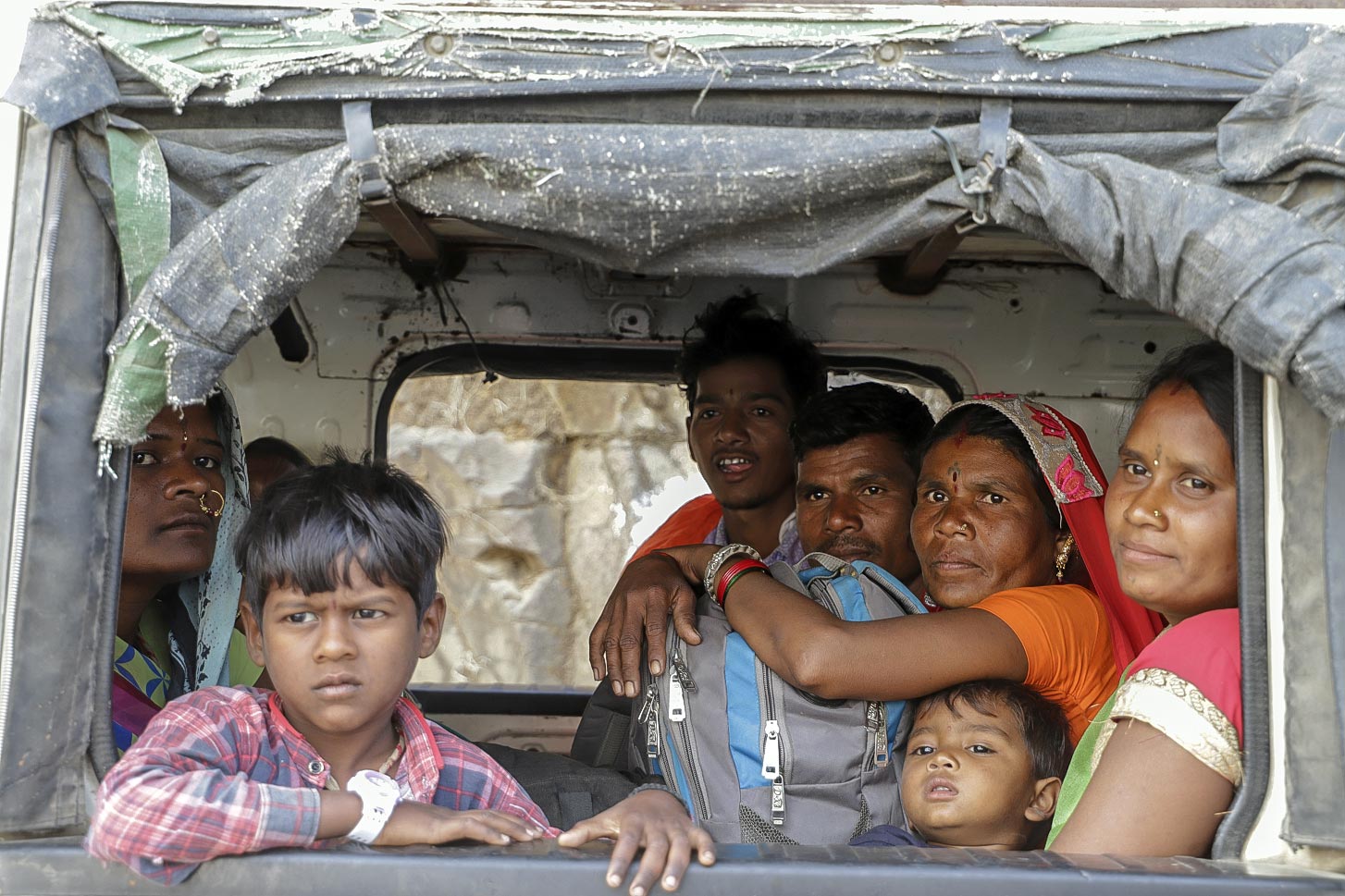Indian economy: Pandemic recovery long way off

Number of employed people fell from 399.38 million in July to 397.78 million in August, with nearly 1.3 million job losses in rural India alone, says CMIE data(MIG photos/Aman Kanojiya)
On August 31, the Union finance ministry tweeted a self-congratulatory message saying its prediction of a V-shaped, or very rapid, recovery in the Indian economy had come true as the Gross Domestic Product in the first quarter, ending on June 30, 2021, spiked by 20.1 pc over the same period last year.
The ministry was soon joined in by dozens of ‘friendly’ media and economists who, as usual, lay the credit at the doorstep of the ‘dynamic leadership’ of Prime Minister Narendra Modi.
But there were also murmurs of caution from some who pointed out that the growth in GDP needs to be seen in the context that in same quarter of 2020, the GDP had plunged by a record 24.4 pc and that despite the ‘rebound’ the economy was nowhere near the path to recovery and that the country’s economy was still sizeably smaller than in the pre-pandemic period of 2019, in fact closer to the level where it had been in 2017, a setback of four full years.
There were other equally worrying data even in the GDP growth. First concerns government expenditure and the second private investment. While the world over, all governments, without any exception, opened up their purses and have continued to support people and the businesses in an unprecedented manner, the Modi government has taken just the reverse stance and cut down its expenses. Continuing with its cuts to the current fiscal, in the first four months of the current financial year, the government expenses have fallen by 39.40 pc compared to the same period last year and is over 62 pc below the level in corresponding months of 2019.
Moreover, government’s unfounded and desperate hope that private sector investment would boost a sustained economic recovery has also come undone as private sector has resolutely held on its cash or disbursed it to shareholders, despite a massive tax cut windfall it had received last year, and even now private sector investment levels are 17 pc below the pre-pandemic level.
Job losses resume
Confirming that the celebrations were not only far too premature but also without any basis, within days of barely a couple of days later, Mumbai-based economy tracking research firm Centre for Monitoring of Indian Economy (CMIE) reported that after hiatus of a month, job losses had resumed as over 1.5 million people from both the formal and informal sectors lost their jobs in August, reversing some of the gains made in July, as the unemployment rate rose in rural and urban India.
The CMIE said that the number of employed people fell from 399.38 million in July to 397.78 million in August, with nearly 1.3 million job losses in rural India alone. This led to a rise in the national unemployment rate from 6.95 pc in July to 8.32 pc last month. Urban unemployment rose 1.5 pc to 9.78 pc in August. The corresponding rates in April, May and June 2021 stood at 9.78 pc, 17.73 pc and 10.07 pc respectively.
The rural unemployment in August rose 1.3 pc to 7.64 pc, primarily driven by low sowing during the kharif season due to a delayed monsoon. As a result, 36 million people were actively looking for work in August, a growth of 17 pc over the 30 million seeking jobs in July.
The jobs market in India has already been a tough one for a few years now as private investment has remained stagnant or fallen consecutively and the government has been aggressively selling off its own units, leading to a significant drop in the number of available jobs. There are at least eight states in the country with double-digit unemployment rates.
The CMIE goes on to say that even the jobs that have come back since the pandemic outbreak, which had seen a loss of almost 220 million jobs in India at the peak in April 2020, have been primarily in low-productive agriculture work when the monsoon-led sowing season was at its peak. Job additions in July mostly comprised poor-quality informal jobs, and unless the economy recovers these people absorbed in agriculture work will find it tough to find alternatives, the CMIE noted.
For jobs to recover and for the economy to revive in a meaningful manner, the private sector investment has to resume and in a meaningful manner say economists. But companies remain far from confident about sustained demand to invest in capacity additions and the mood at the factory gates remains somber.
Pace of growth in manufacturing remained muted in August as demand showed signs of weakness due to uncertainty over the pandemic. HIS Markit, analytics firm, said that the purchasing managers’ index (PMI) for the manufacturing sector declined to 52.3 in August from 55.3 in July. IHS Markit said that despite the expansion, the headline figure indicated a softer rate of growth. Growth was curbed by the pandemic and elevated price pressures, it said.
Growth in exports, too, lost momentum due to pandemic, even though new orders were up in August compared to July, says IHS Markit.
It adds that even though the 12-month outlook for production remained positive, confidence had faded amid worries concerning the lasting scars of the pandemic and the adverse impact of rising costs on companies’ finances parallel to a lack of pricing power. Input prices increased sharply due to strong competition for scarce raw materials and transportation issues. It added that uncertainty regarding growth prospects, spare capacity and efforts to keep a lid on expenses led to a hiring freeze in August.
Poor pay pandemic price
With no support coming in from the government or the employers, finally the burden of survival has fallen on the vast number of poor households in India and paradoxically it is their consumption, though significantly lower than in the pre-pandemic period, that is holding up the Indian economy and preventing it from falling into a prolonged recession or even depression.
But with no funds from the government, high inflation and job losses, the Indian households have been forced to turn to lenders, informal as well as formal. This is reflected in another recent report which says that retail loans, especially gold loan and credit card loans, witnessed a surge over 12 months till July 2021. The jump in personal credit contrasts sharply with little or no growth in bank credit to companies, reinforcing the economic distress of the poor, who have been left all by themselves to deal with the aftermath of lockdowns, job losses and salary cuts.
Gold, the last resort asset of the poor, has been used for raising loans, as reports say that the gold loan outstanding increased by 77.4 pc in one year to July 2021. The nation’s largest lender, the State Bank of India (SBI) says it saw a 340 pc growth in gold loans in the year to June 2021. While the official or formal sector has data of loans, a large majority of the poor households turn to their local moneylenders for their needs and this data has not been compiled but enough empirical evidence to suggest that it would be similar if not far higher than the formal sector loans.
Similarly, credit card outstanding, mainly the favoured lender of lower-middle and middle class families, have risen by 10 pc in the year ending July 31, 2021, to INR 1.11 trillion. The Reserve Bank of India says total retail loans rose by over 10 pc to INR 28.58 trillion in July. It added that credit off-take by industry and services – meaning businesses – rose by a paltry 1 & 2.7 pc respectively. These two sectors incidentally account for over 50 pc of total credit outstanding which totalled INR 108.2 trillion.
Unfortunately, there does not seem to be a visibility on the end of the tunnel for most households though. Bankers say that the trend is likely to continue as fresh demand for gold has grown from April onwards and almost 1 in all 3 loan queries is about gold loan, underlining the fact that low income and lack of collateral have forced many people to opt for that.










